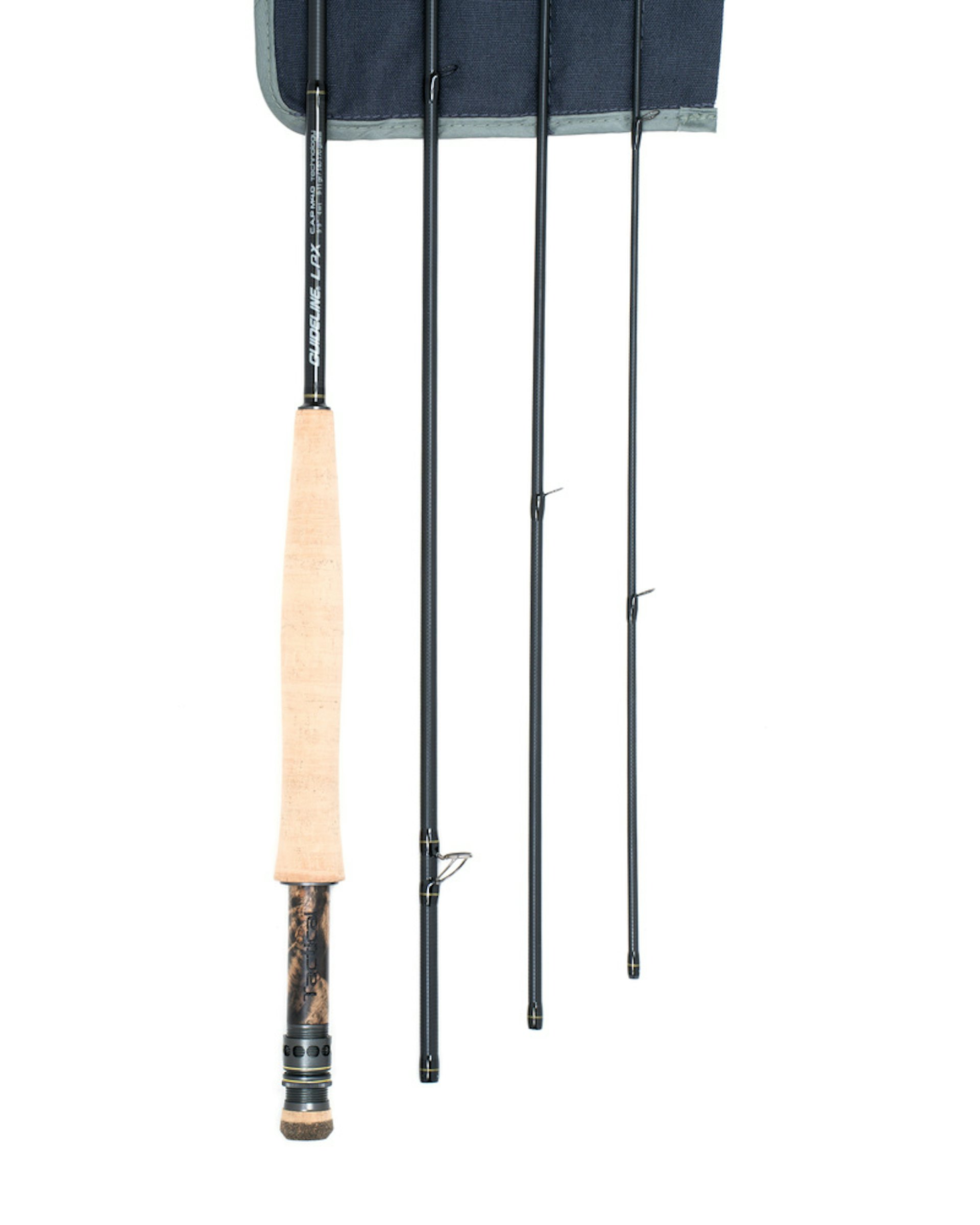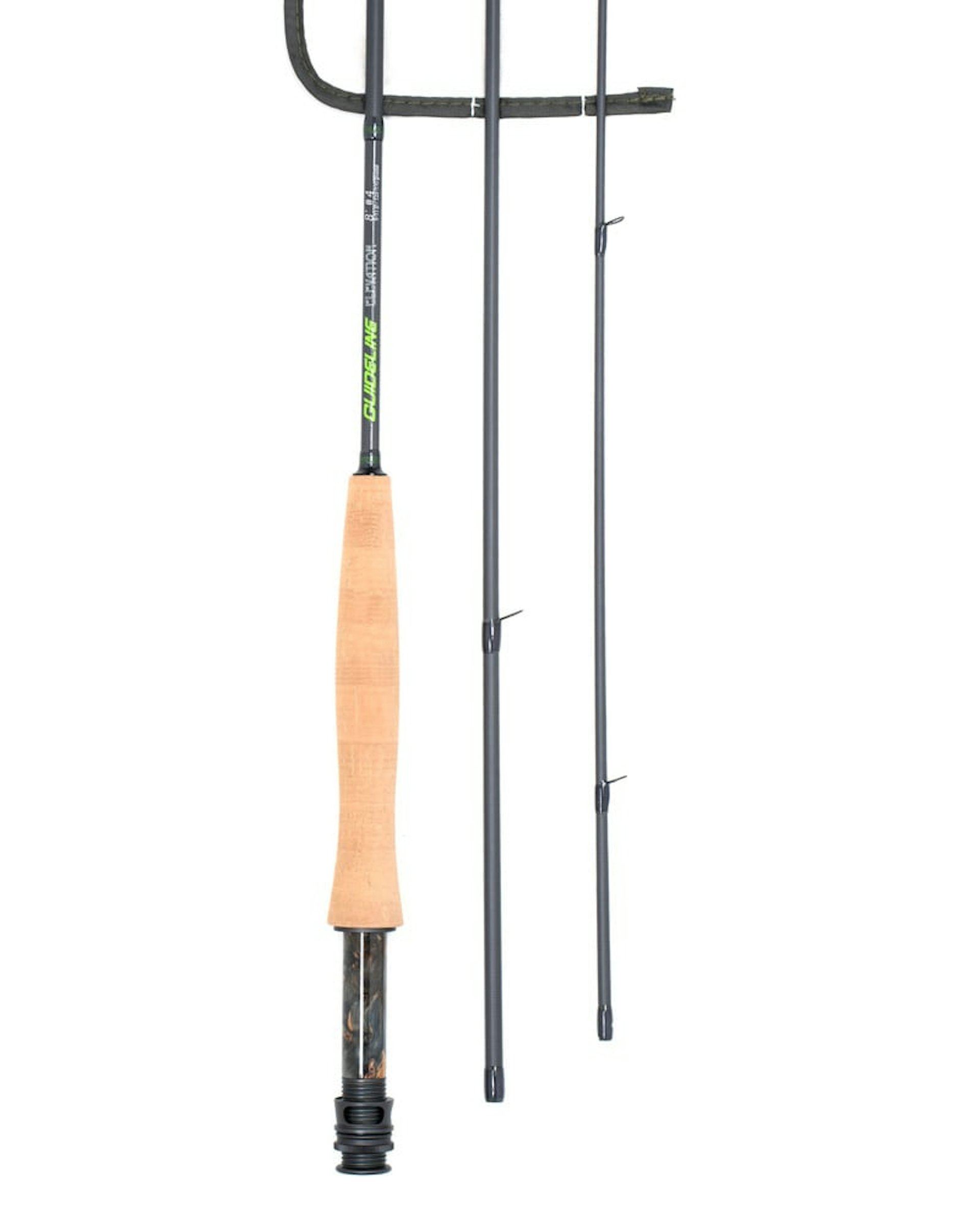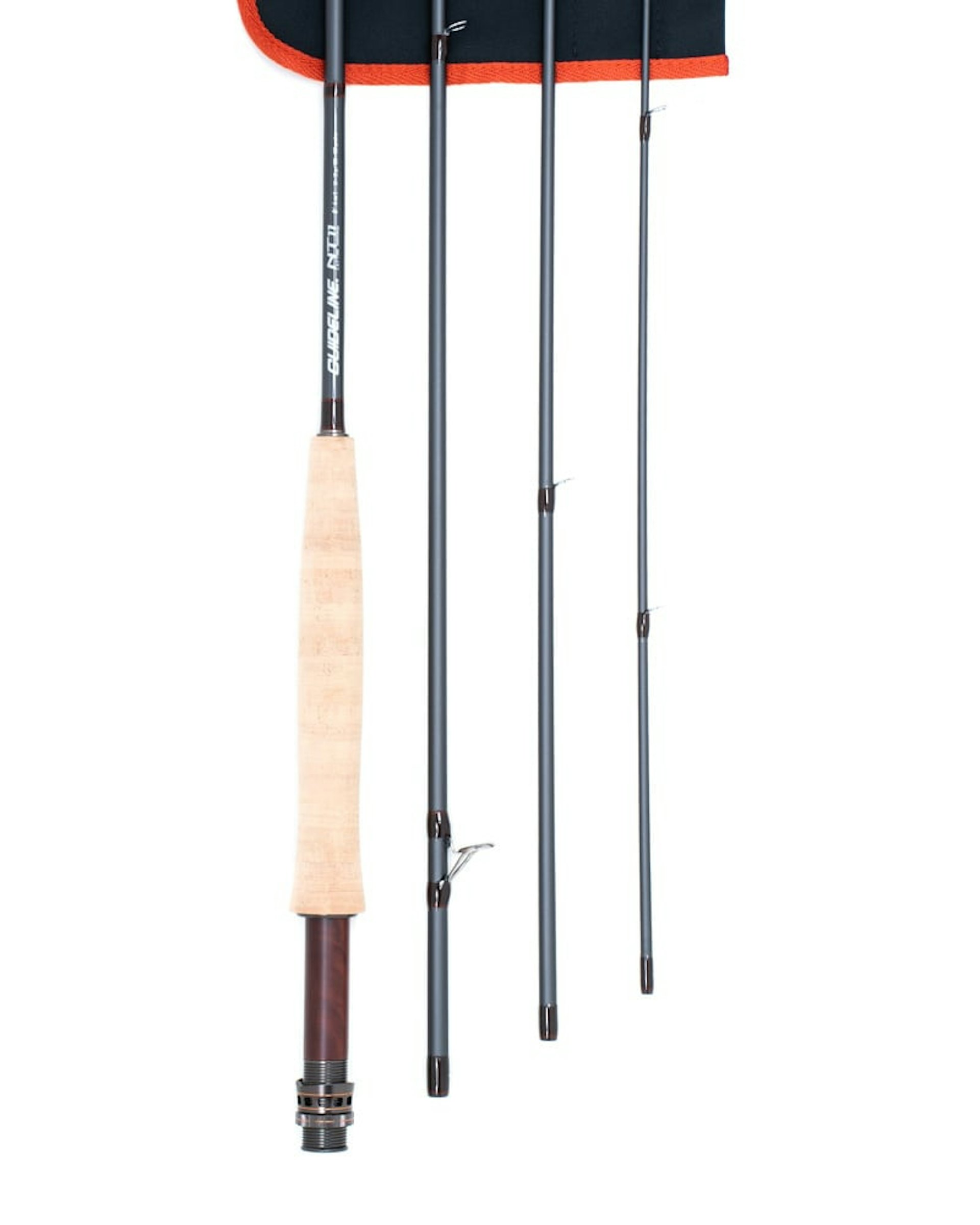Should I select a stiff rod?
Time was not so long ago every angler looked to a rod with a stiff action. The obvious benefits here being straight line path is easily achieved, resulting in pin sharp, tight loops and high line speeds. As good as these ultra fast rods are for casting their unforgiving nature often causes tippet breakages. This is especially the case when river fishing which tends to take place at close quarters, obviously with only a short length of fly line outside the rod tip, little, there is little stretch in our fly line. It’s clear then that a more through action rod will yield readily to protect finer monofilaments and aid with casting too. Many recommend a blank that flexes somewhere round the half-way point and towards the butt section. At Guideline, we’re extremely sensitive to this requirement, you’ll find the Elevation series fit this brief perfectly.
Should I consider a 2 piece, 3 piece or 4 piece rod?
In an ideal World, a one piece rod will give us the truest action possible. However, you can imagine the inconvenience of a rod you can’t break down, especially one of 10, or 11 feet in length, which would make transportation a logistical nightmare. Going back say 30 years, 2-piece rods ruled the roost and were the “go to” for most anglers. At that time multi-piece rods (3 and 4 piece rods) made their debut in the fly fishing world. Granted, many anglers were sceptical at first and to be fair they had good reason. Those early models possessed flat spots along their length, especially around the joints, which were reinforced with excessive wraps of carbon, or glass scrim.
However, overtime and with considerable developments in all areas of rod building multi piece rods have just got better. Using the C.A.P M4.0 technology along with nano resins Guideline are able to achieve the desirable actions and flexes we look for in modern day rods. This makes mutli piece rods the first choice for most anglers these days. With good reason too as they stow away that much easier when in transit. Furthermore, by removing the butt section of say a 10ft 4-piece rod, suddenly the remaining three sections make a 7’6” rod, allowing you to execute a cast in those tight, overgrown places of a stream. As for fighting fish now, often your quarry will slog it out in a given pool and rarely run far, which makes our reel that’s took away on the butt section obsolete!










